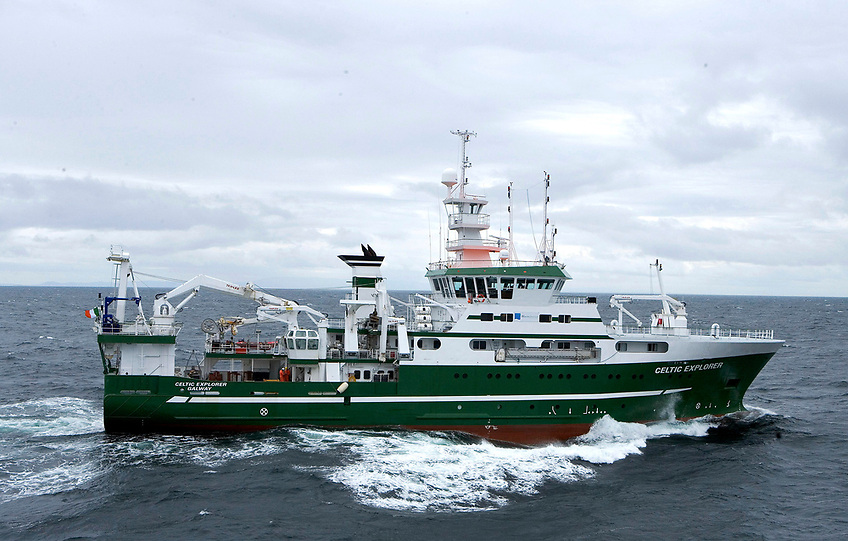See the iconic Wexford coastline, from Hook Head to Carnsore Point, in remarkable detail thanks to a new series of maps added to INFOMAR’s Bluescale Map Series.
As previously reported on Afloat.ie, the collection will comprise 18 high-resolution bathymetric maps highlighting the topography of Ireland’s coastal waters in unprecedented detail.
The latest high-resolution maps, charting the area from Rosslare Harbour to Cahore Point, highlight the unique and intricate landscapes that lie beneath the waves.
Co Wexford has a coastline of some 273km and showcases some of the Ireland’s most unique coastal landscapes.
The first of the Model County maps, released on Friday 3 November, is the Bluescale bathymetric map of Hook Head.
Historically called Rindowan, Hook Head is a headland on the east side of the estuary of The Three Sisters (Rivers Nore, Suir and Barrow). It is part of the Hook Peninsula and is adjacent to the historic townland of Loftus Hall.
This area is the location of Hook Lighthouse, the oldest working lighthouse in the world and one of 70 lighthouses operated by the Commissioners of Irish Lights around the coast of Ireland, playing a vital role in maritime safety.
The Hook Peninsula is composed of many rock types including sedimentary limestone and sandstone. The outcrops around Hook Head consist of abundant exposures of Lower Carboniferous rocks in foreshore platforms, containing beautifully preserved crinoids, bryozoans, bivalves, corals and brachiopods.
 An excerpt from the bluescale map of Carnsore Point and environs in Co Wexford that will be released by INFOMAR on Friday 10 November
An excerpt from the bluescale map of Carnsore Point and environs in Co Wexford that will be released by INFOMAR on Friday 10 November
Next Friday (10 November) the second Model County map, of Carnsore Point, will be made available.
Carnsore Point is marks the southernmost point of the Irish Sea, on the western side of St George’s Channel. A large, offshore area wrapped around the point is a Marine Protected Area (MPA) for its reefs and species-rich underwater life.
The intertidal and offshore reefs are formed of Carnsore granite, a coarse pinkish-brown rock, and range from very exposed to moderately exposed to wave action. In water at depths of 11-30m there are excellent examples of sea squirt communities. Intricate sandbanks lie due east of the headland and north into the Irish Sea.
Since 2006, INFOMAR’s seabed mapping efforts have been instrumental in enhancing our understanding of Ireland's underwater landscape.
The Bluescale Map series offers a new and unique way not only to showcase the mapping effort to date, but also to visualise and communicate complex scientific information to the wider public.
As with all INFOMAR data, these high-resolution maps are available for free to download and have huge potential to communicate with local coastal communities and raise awareness on the importance of maintaining the health and integrity of our marine environment.
INFOMAR is making all 18 maps available for free to the public to download in high resolution JPEG format. Follow the journey each week until mid December as a new map is released on the INFOMAR website and join the conversation on Twitter, Instagram and Facebook.































































